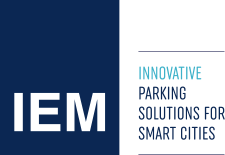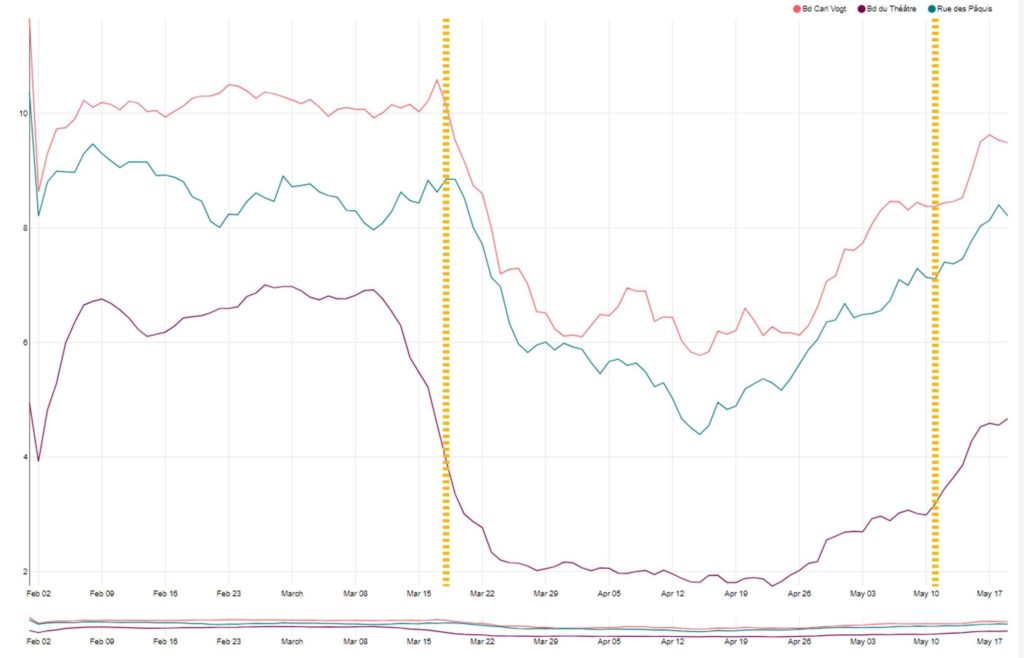Strongly committed to creating a “greener” environment, the city of Antwerp in Belgium has implemented an environmental policy by establishing a “Low Emission Zone” (LEZ). This low-emission zone restricts the entry of the most polluting vehicles into the city center.
In this context and partnering with the parking operator Indigo and the Belgian distributor Krautli, IEM has equipped the city with 960 solar-powered and cashless parking meters. The PrestoInteractif parking meters combine state-of-the-art technology and sustainability while delivering parking tickets and pollution-based authorizations to access the LEZ.
The number of authorizations for polluting cars are limited through a registry system which exchanges information with Antwerp’s central parking rights server and automatically detects unauthorized vehicles in the LEZ. This system helps the municipality to enforce a rules-based parking policy while reducing pollution levels in the city center. The controls are carried out by using cameras recognizing license plates.
IEM has a complete expertise in on-street parking. It’s solar-powered smart parking meters with their unique slim design featuring color touch screens and fast contact-less payment have been positively received by Antwerp citizens. Moreover, they dynamically integrate multiple sources of information which allows to qualify the parking rights of each vehicle within seconds.

Since 2007, the city of Zug has been using around eighty parking meters from different manufacturers to manage the various public parking in the city. Some of the parking meters had become obsolete because they no longer met the technical requirements.
Therefore, in the upcoming months and in order to improve the profitability and management of car parks, while meeting new customer needs, parking meters will be replaced with PrestoConnect meters. Geneva-based with a branch in Rotkreuz, IEM is responsible for manufacturing these fine design parking meters. About thirty parking meters were replaced in September 2020 and the remainder will be installed in the coming months.
PrestoConnect machines are the latest generation parking meters with NFC contactless terminals. In addition to coins and previously introduced mobile applications for parking payment, further app payment methods like Apple Pay, Google Pay and Samsung Pay are now available. Thanks to PrestoConnect parking meters, the total number of machines has been reduced by about 30%, allowing major savings in terms of fleet acquisition and management. All parking meters are networked, communicate in real time via the GSM mobile network and operate by entering the car’s license plate number.
When drivers pay an excess amount, it is recorded thanks to the license plate number and then credited for the next parking session. In addition, the user can obtain his parking tickets by SMS and view them on his PrestoPark user account.
IEM was chosen because it was the only company to offer parking meters that are 100% autonomous in solar energy and offering a variety of payment methods and accepting contactless payments with any type of card.

IEM joins the LoRa alliance, a group of companies that favors the development and the promotion of the LoRaWAN telecommunications network. LoRaWAN is a low power technology which is used for the PrestoSense sensors.
The LoRaWAN technology was developed for telecommunication between battery-operated objectsthat transmit low volumnes of information. LoRaWAN is meant to reduce the maximum power consumption for long battery life of installed equipment. Other telecommunication networks like WiFi and cellular networks are not suitable for their short range and/or fuel consumption.
LoRaWAN technology is ideal for PrestoSense because it allows the sensors to be autonomous for up to 10 years. Also, the parts easily integrate to the case thanks to their small size. Moreover, the LoRaWAN network allows real-time data transfer which informs the driver immediately and reliably on the availability of parking spaces.
After several months of testing and deploying antennas in connected cities, LoRa technology is now in production in several European cities since the beginning of 2016. LoRaWAN is used in the parking sector for vehicle detection sensors, for the reading of water meters, and even for waste collection.
The LoRa alliance, a world-wide group of companies from different sectors, standardizes the use of technology, and participates in the deployment and promotion of the network.
As a member of the LoRa alliance, IEM participates in technology watch by researching the evolution of the norm and certifying its products.
Learn more about LoRa Alliance
Would you like to find “without stress” a parking spot in the city center? Geneva shows you the solution! TV channel SRF1 announces in 10vor10 the intelligent solutions of the swiss company IEM.
This film report explains how to find and pay for your on-street parking through the PrestoPark mobile application, connected in real time to PrestoSense vehicle detection sensors. Furthermore, these data can be integrated into the urban parking guidance system and thus inform motorists of the available parking spaces in the car parks and on the road as well.
PrestoSense sensors provide the city with important data on how users behave in their parking mode, providing information such as the number of parking lots, the duration of parking and the payments made by them. This allows the city to optimize its parking policy in a targeted and efficient manner, to reduce the traffic generated by the search for free parking and to measure the use of parking solutions.
Several cities already benefit from this “smart” solutions. IEM is the leading designer and manufacturer of intelligent parking solutions in Switzerland through intelligent parking meters, parking sensors, a user application and a control application with an operator portal.
Since 10 October 2019 in Geneva, parking is paid simply and quickly from people’s mobile phones with the PrestoPark application that is an integral part of IEM’s digitalization strategy.
Users will have to choose one of the five applications made available by the Parking Foundation in Geneva and the PrestoPark APP differs from the others since it’s the only one developed by Swiss-based company IEM, which installed the set of parking meters and sensors in the streets of Geneva.
The APP’s features make life easier for drivers by offering a variety of electronic services. Once the account is created, the user will only have to insert the parking area (by entering the 1200 for public roads in the city of Geneva) and select the duration of the latter before paying. In 3 clicks it’s done ! Motorists pay and manage their parking from a distance. They receive their parking tickets in a dematerialized way (virtual ticket) and have the possibility to find the history of their payments on their PrestoPark personal account.
In addition, the user will pay the right amount with the application that gives him the ability to stop his parking ticket if he decides to stop parking before time. Finally, he will be able to extend his parking time if he has a legally available time. PrestoPark will stand out even more over time by providing new features for users such as real-time guidance to the parking spaces available in the city of Geneva. This development is being carried out with different partners thanks to an algorithm for predicting the occupation of street parking.











